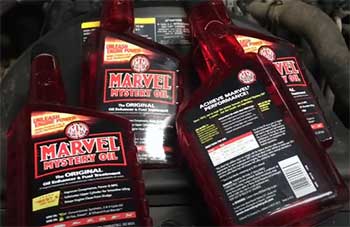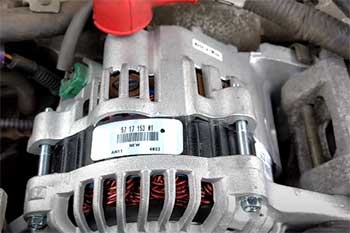I’ve always been captivated by Porsche’s ability to blend heart-pounding performance with everyday practicality. Choosing between the Porsche Panamera and Cayenne feels like picking between two masterpieces, each with its own flavor of luxury and thrill.
In this article, I’ll share my firsthand take on these vehicles, breaking down their strengths and weaknesses to help you decide which suits your lifestyle.
From driving dynamics to family-friendly features, I’ll explore every angle with a clear comparison table, detailed pros and cons, and answers to common questions, ensuring you have all you need to make an informed choice.
A Brief Comparison Table
| Feature | Porsche Panamera | Porsche Cayenne |
| Body Style | Sedan/Hatchback (Sport Turismo option) | SUV (Coupe option) |
| Starting Price (2025) | $106,900 (Panamera 4 AWD) | $79,200 (Base AWD) |
| Engine Options | 2.9L V6 (349 hp), 4.0L V8 (up to 670 hp) | 3.0L V6 (348 hp), 4.0L V8 (up to 670 hp) |
| Transmission | 8-speed PDK | 8-speed Tiptronic S |
| Fuel Economy | 20 kmpl (Hybrid models) | 10.8 kmpl (Base Petrol) |
| Boot Space | 500 liters | 770 liters (SUV), 592 liters (Coupe) |
| Ground Clearance | 215 mm | 210 mm |
| Seating Capacity | 4 (optional 5 in Sport Turismo) | 5 |
| 0-60 mph | 3.0 sec (Turbo E-Hybrid) | 3.1 sec (Turbo GT) |
| Top Speed | 196 mph (Turbo E-Hybrid) | 186 mph (Turbo GT) |
| Towing Capacity | Not rated for towing | Up to 7,700 lbs |
| Reliability Rating | 7.4/10 (iSeeCars) | 8.4/10 (iSeeCars) |
| Resale Value (5-yr) | 54.4% retained | 53.4% retained |
My Journey With Porsche: Setting The Stage
As a car enthusiast who’s spent countless hours behind the wheel of various vehicles, I’ve always had a soft spot for Porsche. The brand’s ability to marry raw performance with everyday usability is nothing short of magic.
Recently, I found myself torn between two of their most compelling offerings: the sleek, sporty Panamera and the versatile, commanding Cayenne.
Both are phenomenal, yet they cater to different sides of my personality—one craves the thrill of a sports car, the other the practicality of an SUV. Let me walk you through my experience, breaking down what makes each car tick and where they fall short.
The Porsche Panamera: A Sports Car in Sedan Clothing
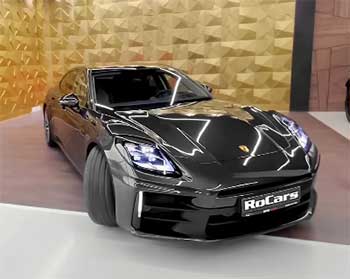
The first time I slid into the driver’s seat of a 2024 Porsche Panamera Turbo E-Hybrid, I felt like I was in a 911 with extra legroom.
The low-slung seating position, the snug embrace of the 14-way comfort seats, and the futuristic dashboard screamed performance.
This car isn’t just a sedan; it’s a statement.
With a starting price of around $106,900 for the Panamera 4 AWD, it’s pricier than the Cayenne’s base model, but you’re paying for a driving experience that’s closer to a supercar than a family hauler.
Pros of The Panamera
The Panamera’s handling is where it truly shines. I took it through some winding roads, and the adaptive air suspension, paired with optional rear axle steering, made it feel like a much smaller car.
The 8-speed PDK transmission shifts with lightning precision, making every gear change feel like a love letter to driving enthusiasts. The Turbo E-Hybrid’s 670 horsepower and 686 lb-ft of torque pinned me to the seat, hitting 0-60 mph in a blistering 3.0 seconds. It’s a rush that never gets old.
The interior is a tech lover’s dream. The Porsche Communication Management (PCM) system integrates seamlessly with Apple CarPlay and Android Auto, and the optional passenger display panel is a neat touch for long trips, though I found it underutilized by my passengers.
The 25.9 kWh battery in the plug-in hybrid models offers up to 56 miles of electric range, which is perfect for my daily commute without burning a drop of fuel. Plus, the Panamera’s sleek design—especially in the Sport Turismo variant—turns heads wherever I go.
Another standout is the customization. With over twice as many trim and performance options as the Cayenne, I could tailor the Panamera to my exact taste, from carbon ceramic brakes to the sporty Turismo body style. It’s like building your own Porsche fantasy.
Cons of The Panamera
But it’s not all rosy. The Panamera’s size—5052 mm long and 2165 mm wide—makes it a beast to park in tight urban spaces, even with the 360-degree camera system. I found myself second-guessing parking spots I’d breeze into with a smaller car.
The rear seats, while luxurious, are snug for taller passengers, especially compared to the Cayenne’s roomier back row. With only 500 liters of boot space, it’s less practical for hauling gear than the Cayenne.
Maintenance costs are another sticking point. Porsche’s three-year, unlimited-kilometer warranty is decent, but servicing a Panamera, especially high-performance models, can hit your wallet hard.
I’ve heard horror stories of $2,000 oil changes and pricey repairs for the PDK transmission. The lack of a capped-price maintenance plan means costs can vary wildly depending on the dealer.
Lastly, the Panamera’s exclusivity comes at a premium. Starting at $1.70 crore (ex-showroom in India), it’s significantly more expensive than the Cayenne’s base model. If you’re not chasing that supercar-like experience, the price might feel unjustified.
The Porsche Cayenne: The SUV That Thinks It’s a Porsche
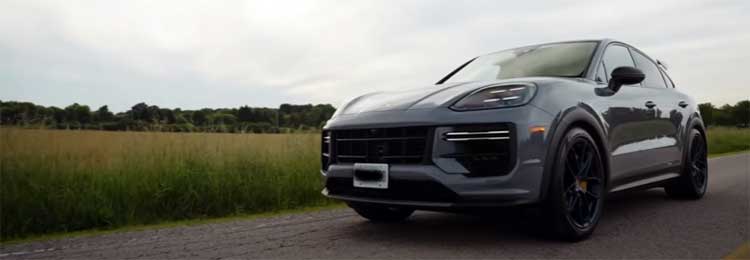
Switching to the Cayenne, I immediately noticed its commanding presence. The 2024 Cayenne Turbo GT, with its gold-bronze Neodyne wheels and aggressive aero kit, looks like it’s ready to dominate any road.
Starting at $79,200 for the base model, it’s the more affordable entry into Porsche’s world, though the Turbo GT pushes well past $200,000. As an SUV, it’s built for versatility, but it still carries that unmistakable Porsche DNA.
Pros of The Cayenne
The Cayenne’s practicality is its biggest strength. With 770 liters of boot space (592 liters in the Coupe variant), I could easily toss in luggage, sports gear, or even a dog crate for weekend getaways.
The higher ground clearance (210 mm) and towing capacity of up to 7,700 lbs make it a workhorse for families or outdoor enthusiasts. I towed a small trailer during a test drive, and the 8-speed Tiptronic S transmission handled it with ease, creeping smoothly in traffic unlike the Panamera’s PDK.
Performance-wise, the Cayenne doesn’t slouch. The Turbo GT’s 670 horsepower matches the Panamera’s top-end model, and its 0-60 mph sprint of 3.1 seconds is neck-and-neck. I took it on a gravelly backroad, and the all-wheel-drive system, combined with Porsche Dynamic Chassis Control, kept it planted.
The higher seating position gave me better visibility, making it easier to navigate crowded city streets or tight parking lots.
The Cayenne also edges out the Panamera in reliability, scoring 8.4/10 compared to 7.4/10 from iSeeCars. Maintenance costs, while still high, are slightly more manageable than the Panamera’s, especially for base models.
The interior, while not as flashy as the Panamera’s, is still luxurious, with standard 8-way comfort seats and a practical layout for families.
Cons of The Cayenne
However, the Cayenne isn’t perfect. Its ride can feel stiffer, especially in higher trims designed for performance. I noticed this on long highway drives, where the Panamera’s smoother suspension made for a more refined experience.
The Cayenne’s fuel economy, at 10.8 kmpl for the base model, lags behind the Panamera’s hybrid options, which can hit 20 kmpl in ideal conditions.
While the Cayenne shares components with Audi and Volkswagen, some purists argue it feels less “Porsche” than the Panamera. I didn’t mind the shared platform, but the interior lacks the bespoke, sporty vibe of the Panamera’s cockpit.
The Cayenne’s size (4930 mm long, 1983 mm wide) can also make it cumbersome in tight spaces, though it’s easier to park than the Panamera due to its height.
Finally, the Cayenne’s design, while striking, blends into the SUV crowd more than the Panamera’s unique silhouette. If you want to stand out, the Panamera’s exotic styling has an edge.
Key Differences Between Porsche Panamera And Cayenne
- Driving Dynamics: Where the Rubber Meets the Road
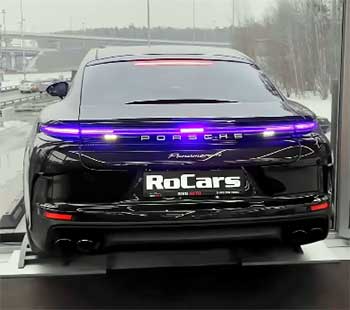
Driving the Panamera feels like piloting a sports car stretched into a sedan.
The low center of gravity and adaptive air suspension make it dance through corners with precision.
I pushed it hard on a twisty mountain road, and the PDK transmission’s rapid shifts kept the power flowing seamlessly.
The Turbo E-Hybrid’s electric motor adds instant torque, making it feel like you’re cheating physics.
The Cayenne, meanwhile, is a beast in its own right.
The Turbo GT’s 4.0-liter V8 roars with authority, and the all-wheel-drive system grips like a vice. I took it off-road (lightly, mind you), and the air suspension adjusted effortlessly to keep things smooth.
However, it’s undeniably an SUV—there’s a hint of body roll in sharp turns that the Panamera avoids. For pure driving thrills, the Panamera wins, but the Cayenne’s versatility makes it a close second.
- Practicality: Family Life Vs. Solo Adventures
As a family man, I appreciated the Cayenne’s roomier interior. The rear seats comfortably fit two adults and a child, with ample headroom and easy ISOFIX mounts for car seats.
The 770-liter boot swallowed my family’s camping gear without complaint, and the automatic tailgate with gesture control made loading a breeze. The Cayenne’s higher ride height also made it easier to get in and out, especially for my kids.
The Panamera, while practical for a sedan, is less family-friendly. The rear seats are best for two, and taller passengers might feel cramped. The 500-liter boot is decent but pales next to the Cayenne’s.
However, for solo drives or date nights, the Panamera’s sporty vibe and luxurious cabin make it the clear winner. I loved the way the 14-way seats hugged me during spirited drives, and the optional massage function was a nice touch after a long day.
- Technology and Safety: Cutting-Edge, but Not Perfect
Both cars are tech powerhouses. The Cayenne’s PCM system is intuitive, with standard navigation and voice control, while the Panamera adds a slick passenger display panel.
Both offer adaptive cruise control, lane keep assist, and a 360-degree camera, but the Cayenne’s self-steering ParkAssist is a standout for urban dwellers like me. The Panamera’s Driver Awareness Detection is exclusive, adding a layer of safety on long drives.
Safety-wise, the Cayenne has a slight edge with a five-star Euro NCAP rating for its third-generation model, while the Panamera lacks an ANCAP rating but boasts 10 airbags.
Both cars pack features like AEB, lane change assist, and tyre pressure monitoring, ensuring peace of mind.
- Cost and Value: The Price of Porsche
The Cayenne’s lower starting price ($79,200 vs. $106,900) makes it more accessible, but fully loaded models like the Turbo GT can rival the Panamera’s cost. The Panamera’s higher resale value (54.4% vs. 53.4% after five years) is a plus, but its maintenance costs are steeper.
I found the Cayenne’s shared platform with Audi and VW keeps repair costs slightly lower, though both cars demand premium care.
Which Porsche Fits You?
After test-driving both, I’m torn. The Panamera is my go-to for its sports car soul and head-turning style. It’s the car I’d pick for solo adventures or impressing clients.
But the Cayenne’s practicality, reliability, and towing prowess make it the better choice for my family’s needs. If you prioritize driving thrills and don’t need extra cargo space, the Panamera is your match. If versatility and family-friendly features are key, the Cayenne’s your ride.
Also Read: Is Protect My Car Worth It?
Frequently Asked Questions (FAQ)
The Cayenne’s stiffer ride, lower fuel economy (10.8 kmpl vs. Panamera’s 20 kmpl), and less distinctive design compared to the Panamera are notable drawbacks.
No, the Panamera is expensive to maintain, with high costs for parts, repairs, and servicing, especially for high-performance models.
Porsche, particularly the Cayenne, is more reliable, scoring 8.4/10 (iSeeCars) compared to Range Rover’s lower reliability ratings due to complex electronics.
Yes, Cayennes retain 53.4% of their value after five years, slightly less than the Panamera’s 54.4%, but still strong for a luxury SUV.
Conclusion: Your Porsche, Your Way
You’re standing at a crossroads, and both the Panamera and Cayenne are calling your name. I’ve laid out the facts—performance, practicality, tech, and costs—to help you choose.
The Panamera’s sports car DNA and sleek design make it a thrill-seeker’s dream, while the Cayenne’s versatility and family-friendly features are hard to beat. Whichever you pick, you’re getting a Porsche that blends luxury and performance like no other. Take a test drive, feel the road, and let your heart decide.
Your perfect Porsche is waiting.
